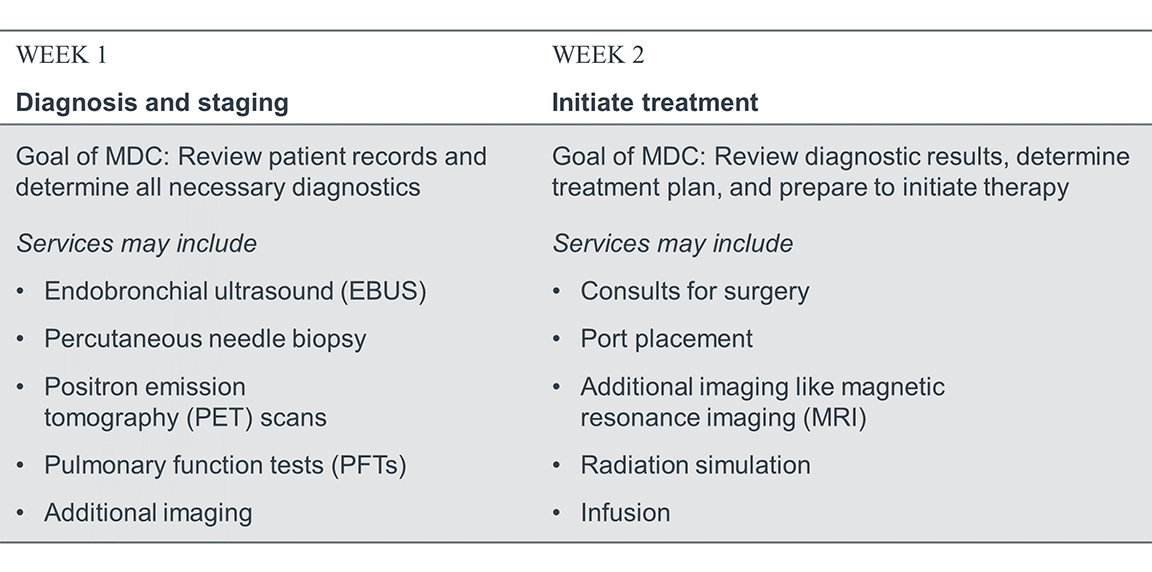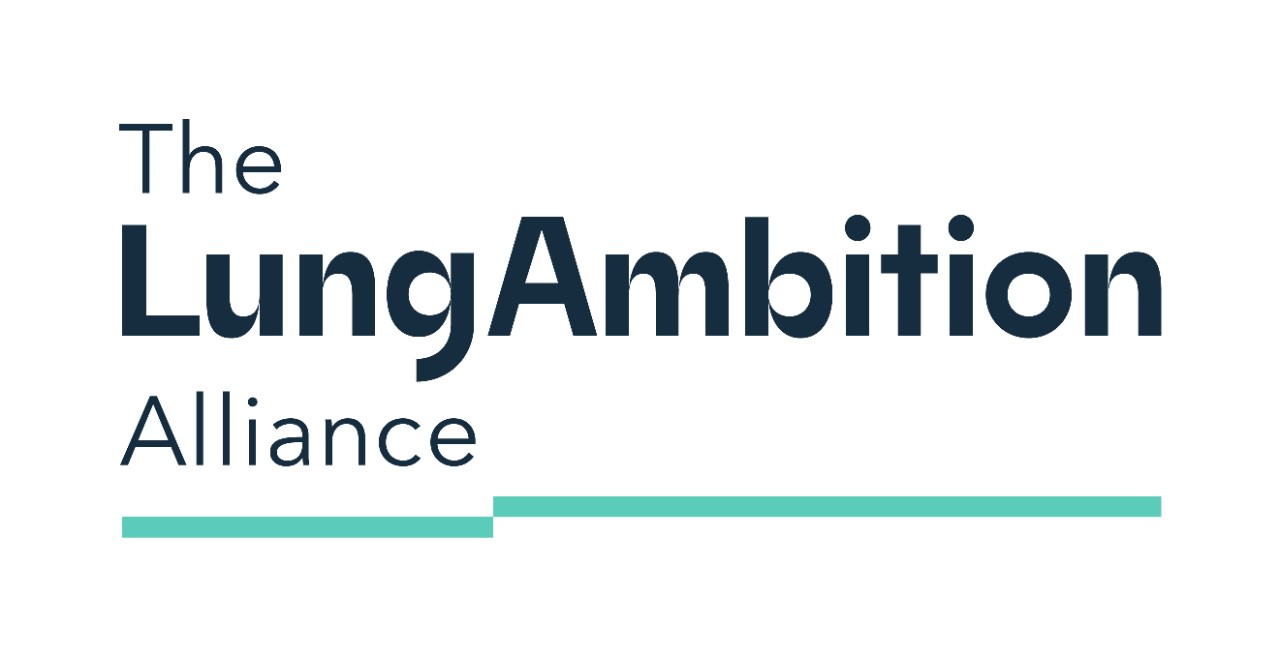The challenge
Early lung cancer detection saves lives. However, a recent study found that just about 14.4% of eligible patients received the recommended screening exam, low-dose computed tomography (LDCT). Additionally, the times between screening to diagnosis and diagnosis to treatment may be lengthy. One study published in 2019 found that there was a 19.2% reduction in survival in Stage I lung cancer for every six weeks until treatment was initiated.
The organization
Wellstar Health System is a large health system located in Georgia. The system includes 11 hospitals, 9 cancer centers, and 21 imaging centers among other services.
The approach
Wellstar developed a multidisciplinary lung cancer detection program that involves community provider outreach to increase screening rates, comprehensive pulmonary nodule management, and a “STAT” clinic to centralize and expedite care decisions.
The result
Wellstar’s lung cancer screening program expects to conduct 13,000 lung cancer scans in 2022 alone. Since the STAT Clinic began in 2007, they have reduced the average time from scan to diagnosis to treatment from 94 days to just 14 days.
How Wellstar built a truly patient-centric early lung cancer detection program
Lung cancer detection requires collaboration between many different specialties. Even after a suspicious finding, traditional care models require multiple patient visits. To streamline care, Wellstar gathers all the relevant clinicians to create a consensus care plan as quickly as possible.
The three elements
Wellstar’s approach to building a comprehensive lung cancer detection program involves three elements:
Engaging patients in lung cancer screening is challenging, and nationally rates remain incredibly low. A recent study found only an estimated 14% of eligible patients received the recommended screening exam. Patients are often referred by their primary care physicians (PCPs), who play an incredibly important role in driving volume for lung cancer screening programs. But PCPs are notoriously busy, and it falls to lung cancer screening programs to ensure providers are well equipped to discuss lung cancer screening with their patients.
Wellstar’s goal is to make it as easy as possible for PCPs to refer patients into lung cancer screening programs. To do this they focus on two areas:
1. Provide practical, useful education to PCPs
Wellstar leverages their physician relations team and nurse navigators to educate PCPs in their market. They focus on providing only the most critical information, such as:
- The burden of undiagnosed lung cancer in their practice, including smoking rates and lung cancer prevalence in the area
- How to record an accurate smoking history, which is required to determine patient eligibility but challenging to providers to accurately track
2. Create a seamless referral experience
To assist providers in qualifying and referring patients for lung cancer screening, Wellstar developed a shared decision-making tool for clinicians and clinician assistants within their electronic health record (EHR) that pulls patient’s age and smoking history to determine eligibility. For eligible patients, a best practice recommendation appears that includes a short script for providers, which may serve as the shared-decision-making visit, and one-click referral for screening. Wellstar’s lung cancer screening program takes ownership of all patient follow-up, again reducing burdens on PCPs.
What are incidental pulmonary nodules (IPNs)?
Incidental findings are abnormalities uncovered unintentionally and unrelated to the condition that prompted an exam. Pulmonary nodules are abnormal growths that form in a lung. They can be identified on imagining scans. Most pulmonary nodules are benign, but some indicate the presence of lung cancer.

IPNs are key to a comprehensive lung cancer program
Wellstar expanded their lung cancer detection program in 2020 to more formally focus on incidental pulmonary nodule management in addition to LDCT screening. The organization invested in a tool embedded in their EHR to provide a database and tracking tool for patients with IPNs detected at Wellstar. The tool is primarily used by Wellstar’s lung navigators to longitudinally track patients and coordinate recommended follow-up care.
In the first 12 months of their IPN program Wellstar detected and treated 36 lung cancers. Wellstar expects to rescan 6,000 patients in 2022 that originally entered the lung cancer detection program with IPNs (compared to 7,000 from screening).
If managed correctly, incidental findings may allow more patients with lung cancer to be diagnosed at earlier stages, providing another opportunity to help improve survival.
The hallmark of Wellstar’s lung cancer detection program is their approach to reduce time from screening to treatment. Instead of fitting the patient into the clinician workflow, Wellstar built a workflow around the patient. They call this a synchronous, patient-centric approach internally branded as “STAT Clinics.”
To implement this new vision, Wellstar made two operational changes:
1. Centralized all services and clinicians involved in lung cancer detection, staging, and treatment decisions.
2. Established two 7-day cycles with goals and processes for each, holding clinicians to an established timeline.
Program success relies on strong patient navigators to support patients and facilitate clinician decision making.

STAT Clinic Cycles
Navigators initiate both 7-day cycles, which begin with multidisciplinary consensus (MDC) meetings. Throughout these cycles navigators also provide additional administrative support, such as obtaining insurance authorizations.

Importantly, multidisciplinary consensus meetings occur while the patient is in the clinic. This allows patients to leave each appointment with results and next-steps in hand.
Wellstar continues to iterate with process improvements that will cut time to diagnosis and move patients to treatment faster. The STAT Clinic approach has allowed Wellstar to improve survival rates, improve patient satisfaction, and reduce unnecessary testing and visits (reducing total cost).
How we know it’s working
In 2022, Wellstar expects about 13,000 patients in their lung cancer detection program. Almost half of those patients came through their newly developed incidental pulmonary nodule program, and the others came through screening. Since beginning their lung cancer program in 2007, Wellstar has reduced time from nodule identification to treatment initiation by 78% to an average of 14 days.
- Community impact: Wellstar’s lung cancer screening program currently scans around 500-600 patients a month, with 80-120 new patients a month
- Stage shift: Approximately 71% of cancers detected are Stage I and II, with about 29% detected at Stages III and IV (compared to a national average of 24% of cancers detected at an early Stage)
- Experience: Wellstar’s STAT Clinic maintains patient experience scores above the 90th percentile
Having the right approach to lung cancer screening may help save lives. By combining a screening program with incidental finding programs, and managing both efficiently and effectively, Wellstar has been able to do just that.
The Lung Ambition Alliance, a global coalition with partners across disciplines in over 50 countries, was formed to combat lung cancer through accelerating innovation and driving forward meaningful improvements for people with lung cancer. We do this by advocating for improved approaches in three areas: screening and early diagnosis, accelerated delivery of innovative medicine, and improved quality care.
Learn more about The Lung Ambition Alliance
This report is sponsored by AstraZeneca, an Advisory Board member organization. Representatives of AstraZeneca helped select the topics and issues addressed. Advisory Board experts wrote the report, maintained final editorial approval, and conducted the underlying research independently and objectively. Advisory Board does not endorse any company, organization, product or brand mentioned herein.
To learn more, view our editorial guidelines.

This report is sponsored by AstraZeneca, in partnership with The Lung Ambition Alliance. Advisory Board experts wrote the report, conducting the underlying research independently and objectively. AstraZeneca had the opportunity to review the report.
Learn moreDon't miss out on the latest Advisory Board insights
Create your free account to access 2 resources each month, including the latest research and webinars.
Want access without creating an account?
You have 2 free members-only resources remaining this month remaining this month.
1 free members-only resources remaining this month
1 free members-only resources remaining this month
You've reached your limit of free monthly insights
Become a member to access all of Advisory Board's resources, events, and experts
Never miss out on the latest innovative health care content tailored to you.
Benefits include:
You've reached your limit of free monthly insights


